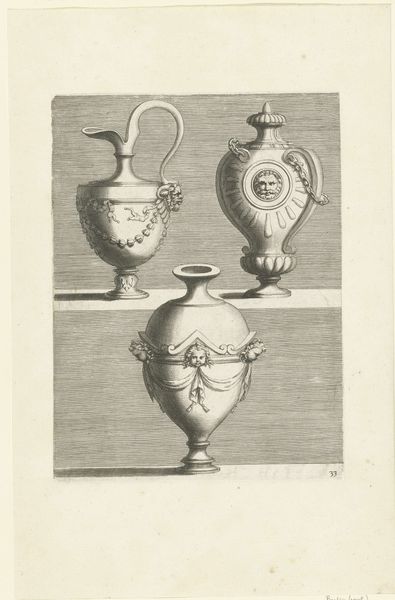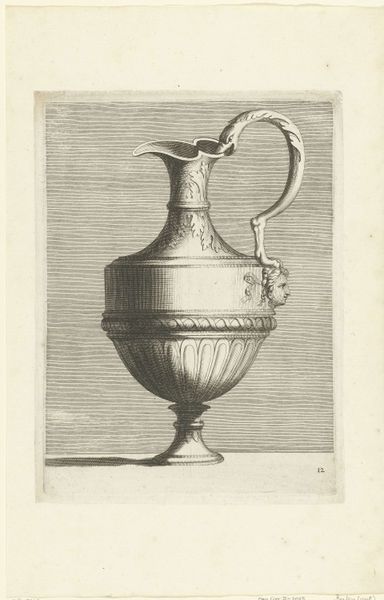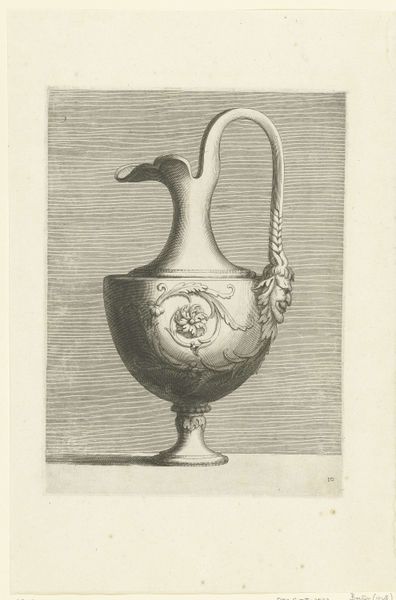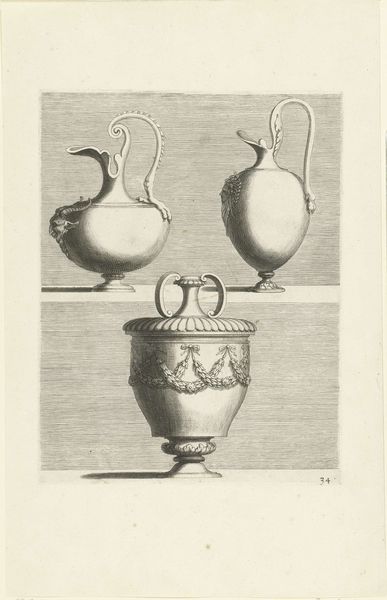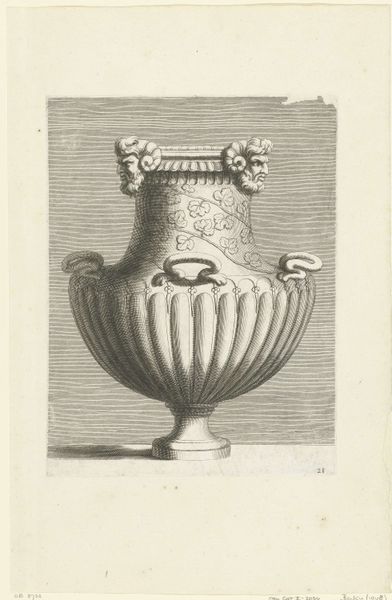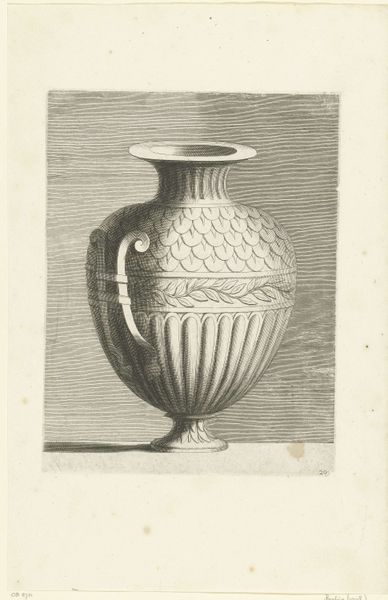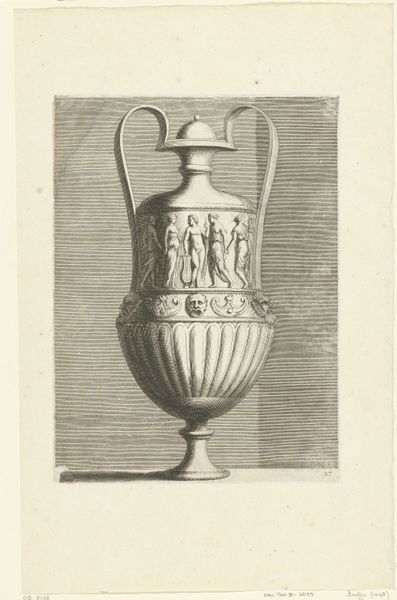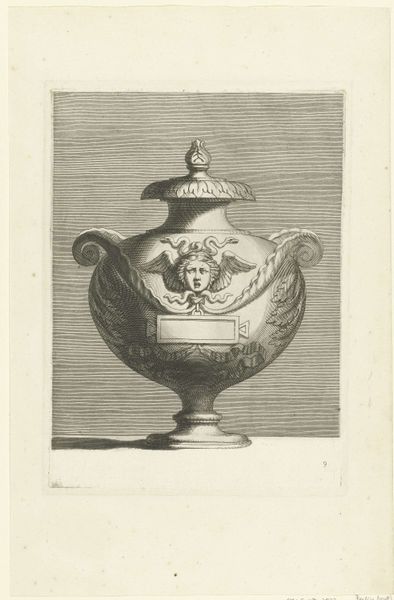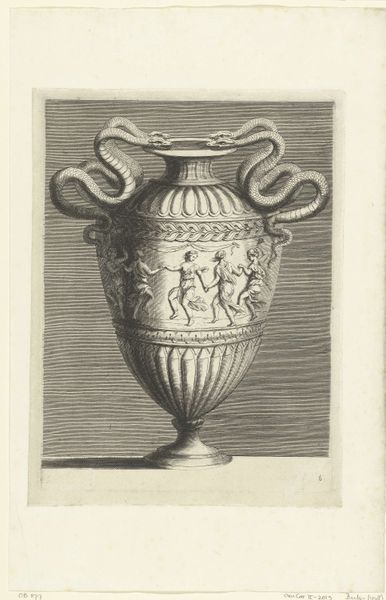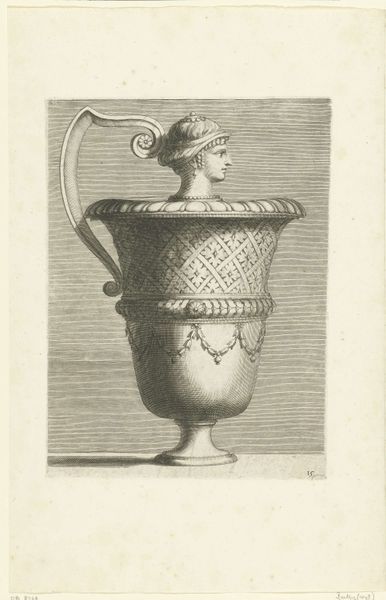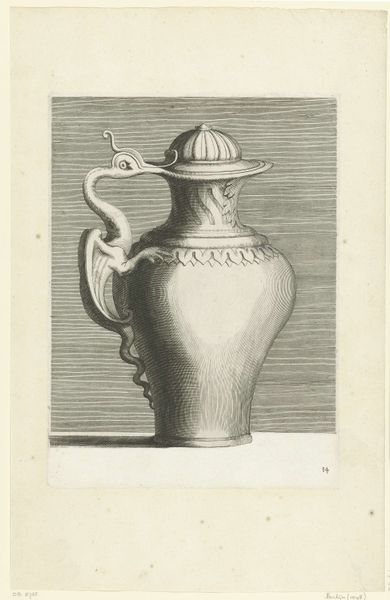
print, engraving
#
baroque
#
dutch-golden-age
# print
#
old engraving style
#
engraving
Dimensions: height 275 mm, width 202 mm
Copyright: Rijks Museum: Open Domain
Editor: This print, "Drie vazen" from 1667, attributed to Françoise Bouzonnet, depicts three vases, seemingly rendered in meticulous detail. I'm struck by how these objects, probably quite common at the time, are elevated through this careful engraving. What can you tell me about this piece? Curator: Let's consider the engraving itself. The artist had to possess serious technical skill. Notice the material specificity achieved purely through line? It attempts to evoke the gleam and textures of precious materials. I am especially interested in how these types of detailed prints contributed to a culture of consumerism. They function almost like proto-catalogs, no? Editor: That’s interesting, like an early form of advertising? Were engravings common objects at this time, available to a wide audience? Curator: Yes, prints allowed for wider distribution than unique objects. And, of course, these objects would be traded internationally, right? Engravings, then, are part of a system of both production and consumption. Who benefits from this system? What labor is involved in acquiring the raw materials, crafting these vessels, and reproducing these images? Consider how many hands these pass through! Editor: Thinking about all the labor that goes into even creating the image is really eye-opening! It makes me reconsider how I value objects, especially ones from the past. Curator: Precisely. This shifts our focus from simple aesthetic appreciation to understanding the socioeconomic context that brought these images—and the objects they represent—into being.
Comments
No comments
Be the first to comment and join the conversation on the ultimate creative platform.

